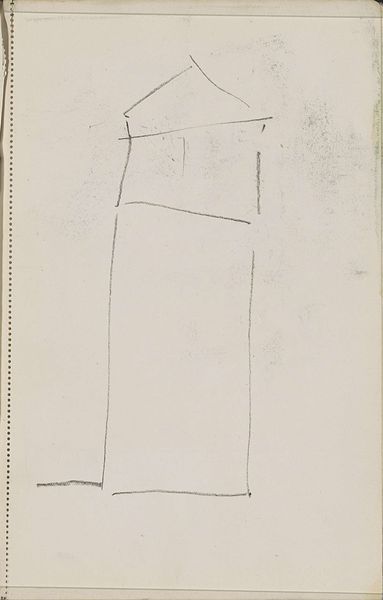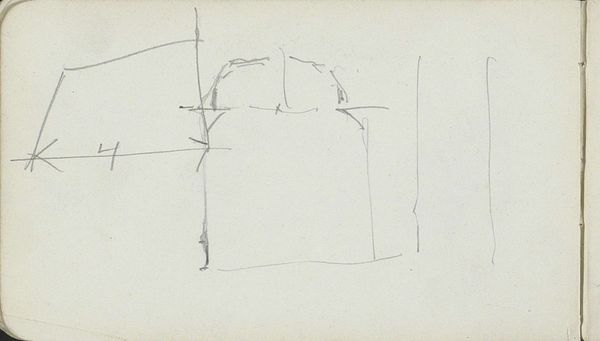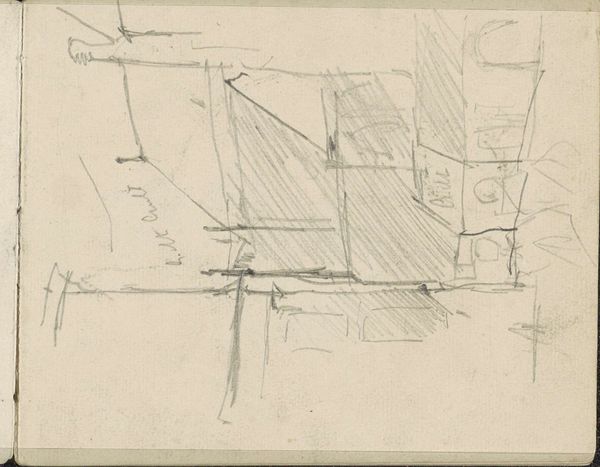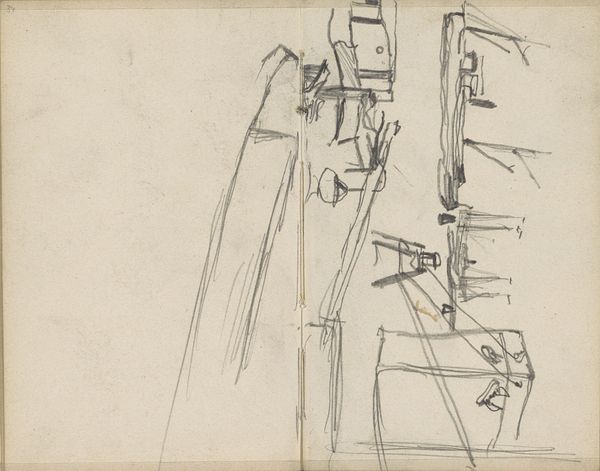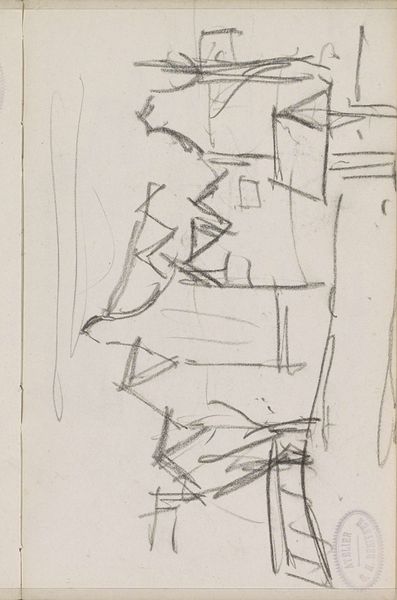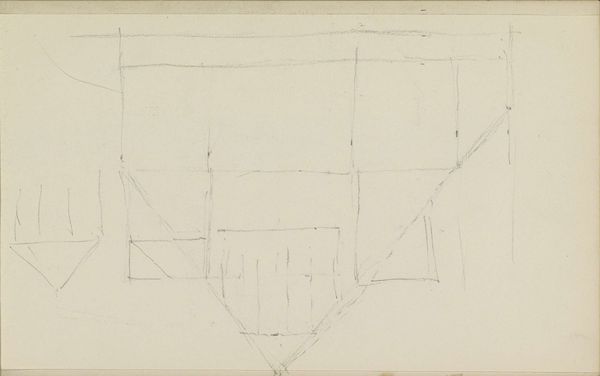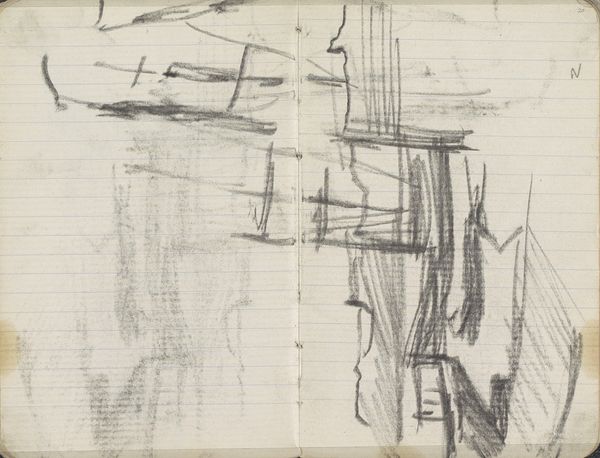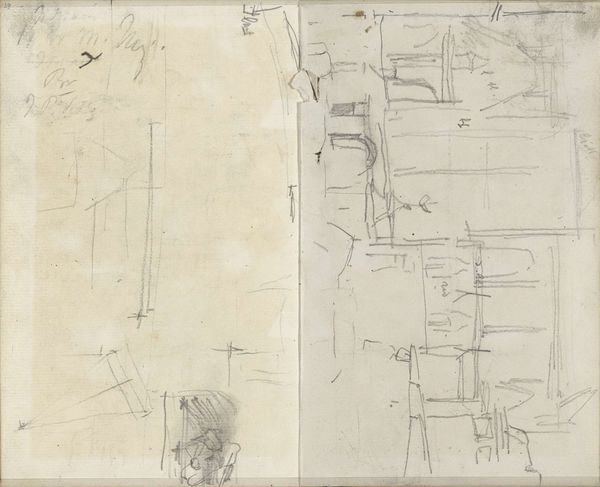
drawing, pencil
#
drawing
#
form
#
geometric
#
pencil
#
line
Dimensions: height 100 mm, width 160 mm
Copyright: Rijks Museum: Open Domain
Curator: This is "Studie, mogelijk een architectuurstudie" which roughly translates to "Study, possibly an architectural study", a pencil drawing dating from around 1912, by George Hendrik Breitner. It resides here at the Rijksmuseum. Editor: The simplicity strikes me first. Raw lines sketch an abstract scene that hints at urban geometry; there’s a quiet energy. Curator: Breitner's style frequently involved quickly capturing street scenes, construction, and urban life, and this looks like the earliest seeds of some now demolished urban planning. He moved from painting to photography and back again, constantly examining modernity as a theme, its aesthetics, and its impact on the populace. It speaks to his commitment to representing everyday life in Amsterdam and elsewhere. Editor: Knowing that context enriches it. The “ordinariness” speaks volumes now. I'm thinking about how urban spaces are constantly being renegotiated based on race, class and access. Do we have an urban planning sketch or a social commentary on inequality, laid bare in minimalism? Curator: I see it more as a reflection of the fast-changing architectural landscape in early 20th century Amsterdam. There was widespread poverty alongside major building projects, so to separate urban development from its societal repercussions feels... artificial. Breitner’s gaze may not be directly critical, but it is observational. Editor: Maybe it is both? A snapshot, yes, but that act of observing and documenting is powerful. Who is granted space, who is designing that space and who benefits all comes to the surface. The geometric forms, that grid - it reminds me of Lefebvre's concept of social space. Curator: Breitner was clearly very focused on recording the transformations that new technologies and infrastructure created for city dwellers. It gives art historians something concrete, visual material, with which to contextualize that transformation. Editor: I agree; it's a very concrete lens, yes, through which we see evolving cities. The work speaks quietly, which I respect, while asking really complex questions, making the audience confront our past and imagine a fairer tomorrow. Curator: Exactly. I will see if the curator who’s working directly with our urban design collection will offer more insights into its historical planning context. Editor: Sounds amazing; perhaps the planning document may also help with better social insights.
Comments
No comments
Be the first to comment and join the conversation on the ultimate creative platform.





